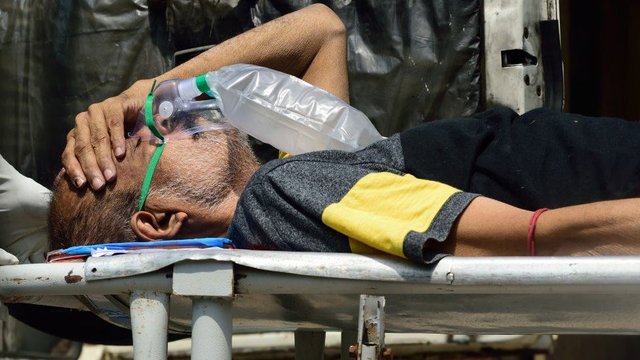The Diary Game 06/05/2021. Oxygen - A Luxury in Pandemic Time
People could once consider oxygen a human right. But the COVID-19 and the pandemic time we live in has revealed that access to oxygen, for medical use, is a luxury in all low and middle income countries.
It's kind a complicated thing to have access to pure oxygen for medical treatments, most time very expensive and often dangerous business, especially in pandemic times. Just look at the current situation in India, is a harsh reminder of this problem. The second wave of COVID-19 hit the country hard - the total number of deaths just exceeded a quarter of a million. Oxygen is insufficient. Due to the current emergency, Indian citizens have turned to the black market to buy oxygen far above its usual price. This is why the world of reserchers are trying to find an alternative. Oxygen is largely obtained from liquefied air. The air we breathe is turned with various procedure into a liquid. Once they have managed to liquefy the mixture, they use distillation - the same process used to make whiskey and gin - to separate the air into its various components, with oxygen among them.
Oxygen is pure gold in a pandemic
This process requires huge amounts of energy and huge industrial facilities, so it is limited to only a few areas of the world, most of the global north. Liquid oxygen must be stored and transported under high pressure, creating serious logistical problems and safety problems - oxygen is really explosive. The US relies on heavy pipes to transport oxygen under pressure. In Europe, transport is mainly by liquid oxygen transported in large tanks. For some underdeveloped countries, the distribution of oxygen is done through bottles. But the oxygen bottle market is surrounded by just a handful of chemical companies. The use of bottles also adds another layer of safety issues, as their correct handling requires more precautions and proper preparation. So, after various research, most countries lack both the infrastructure needed to obtain liquid oxygen and to transport it to a hospital. There are other way to obtain oxygen, like using some concentrators, by removing nitrogen, using a series of membranes and porous materials plus filters. They began to be produced in the mid-seventies, and the technology is very well established.
How to produce oxygen cheaper
These devices convert air into an oxygen-enriched gas, usually over 95% (the rest consists mainly of argon). This is usually good enough for fans. The advantage of a concentrator is that it can be produced as a small device for use in hospitals or nursing homes. Commercially available concentrators exist now, but are expensive and difficult to produce in developing countries. New types of materials that store and separate gases are being studied, some of which offer potentially affordable solutions for devices such as oxygen concentrators. Thus, two main types of materials are developed. Both are very porous materials. You can imagine them as miniature sponges, of molecular dimensions. Like sponges, these porous materials absorb more fluid than you can imagine. Although the millions of pores inside may seem tiny, their total area is monumental. Thus, an initial prototype was developed that works. The researchers hope to have a final prototype within two months, after which they will have to seek medical approval.
